After leaving Zimbabwe we flew down to South Africa, the last African country we will visit on this trip. We spent one night at a hotel in Johannesburg and then caught a bus in the morning to the town of Phalaborwa. The bus journey took just over nine hours with stopping along the way to pick up and drop off passengers. We were given the opportunity for a 30-minute bathroom / lunch break, which was at a truck stop with several fast food restaurants and zebras, rhinos, buffaloes, and other wild animals outside in a large fenced area just behind the building – only in Africa.
We arrived in Phalaborwa, a small town in the Limpopo province of South Africa just outside of Kruger National Park, at around 5:30pm on a Sunday. We quickly realized the entire town was more or less shut down due to it being a Sunday. We did not have a car and there was no taxi service to be found, so we walked to our hotel from where the bus dropped us off with all our luggage, which took about 30 minutes. After we reached our hotel and settled in, we went to bed hungry since no restaurants within walking distance were open. Independent travel is not always fun and glamorous.
Our reason for coming to this part of South Africa was to volunteer for two weeks at C.A.R.E.: The Centre for Animal Rehabilitation and Education, a wildlife rehabilitation sanctuary dedicated to the care, welfare, rehabilitation, and protection of injured and orphaned chacma baboons. We were picked up by a C.A.R.E. team member and driven to the centre, which is about an hour from Phalaborwa inside a private nature reserve bordered by the Olifants River and Kruger National Park. The volunteer living quarters are surrounded by an electric fence for safety. Numerous times we saw wild elephants, giraffes, and warthogs in the surrounding area just outside the fencing.
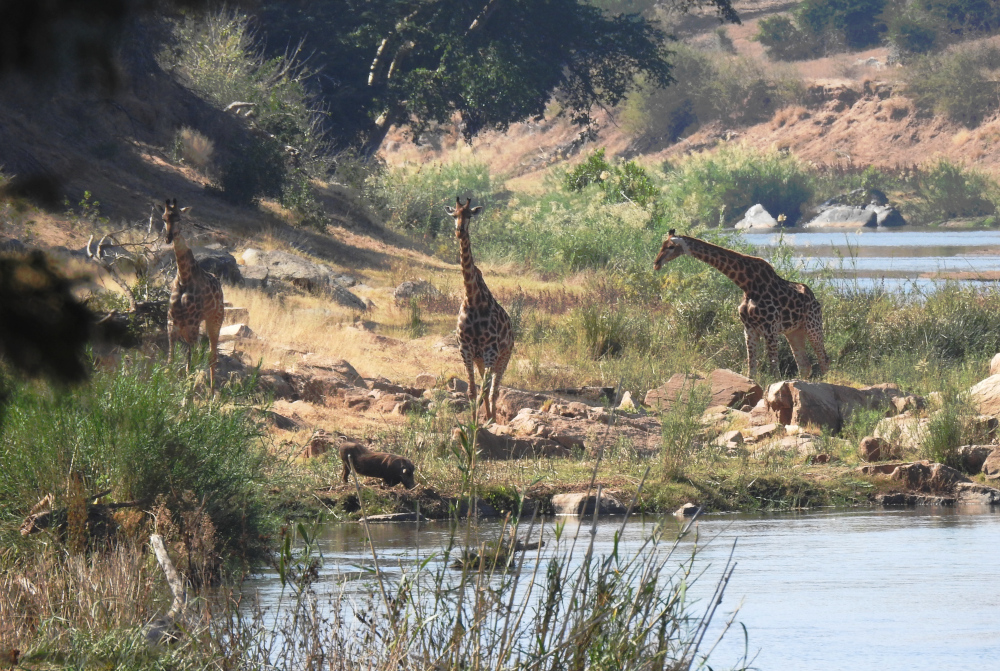
C.A.R.E.’s goal is to give orphaned baboons a second chance by providing them with a nurturing environment and then, when they are ready, matching them with mother-figure baboons and a new troop to one day be safely released into the wild together. Baboons are intelligent, adaptive, persistent, and resourceful creatures. Many baboons living near humans have figured out how to stealthily obtain food from their human neighbors and this has gained them a reputation as pests in much of Africa.
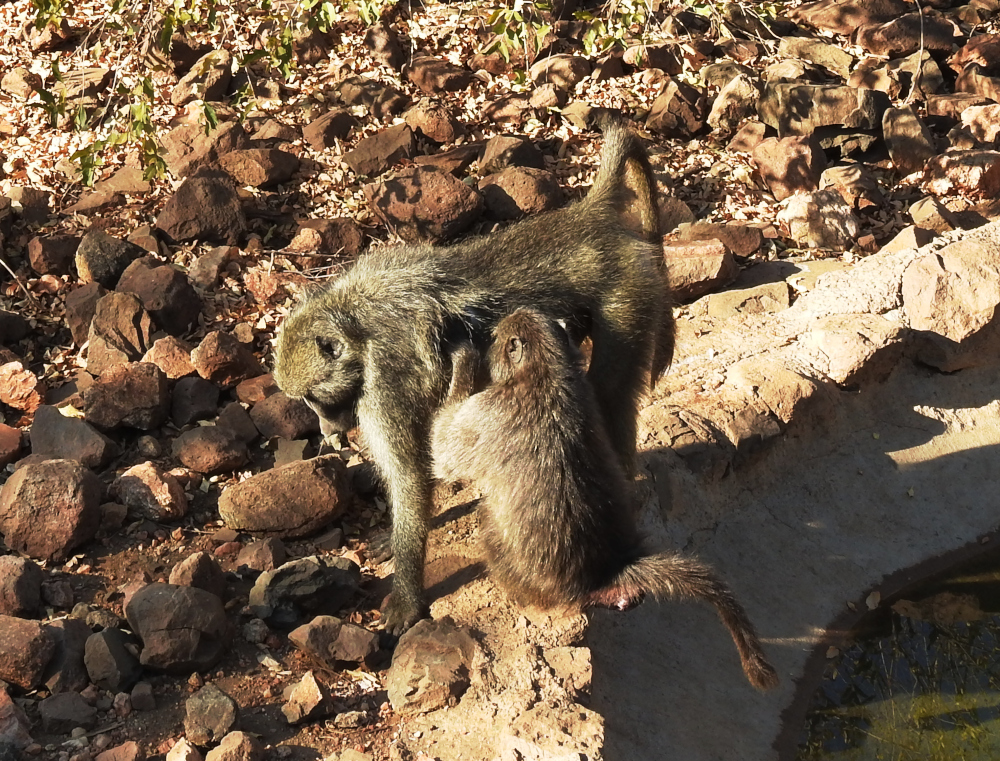
Baboons’ lives are not always shown much respect in South Africa and many are intentionally killed by humans due to them being perceived as a nuisance. When a mother baboon is killed, a baby baboon is sometimes found still attached to the mother’s body and will end up being turned in to a place like C.A.R.E. as the orphaned babies most likely would not survive on their own in the wild. While we were at C.A.R.E. two orphaned baby baboons named Oreo and Mandela were being cared for as they were nurtured and prepared to be bonded with new mother-figure baboons once they were big and strong enough.

Oreo’s mother was killed by a dog when he was only one week old, but thankfully he wasn’t injured and the dog’s owners contacted C.A.R.E. when they discovered him. Oreo is doing well with his rehabilitation in preparation for eventual release into the wild. The first step is growing up to be strong enough to meet a potential adoptive baboon mother. Right now he enjoys his milk, building his muscles through play and climbing, and watching and listening to the baboons all around him at the sanctuary.
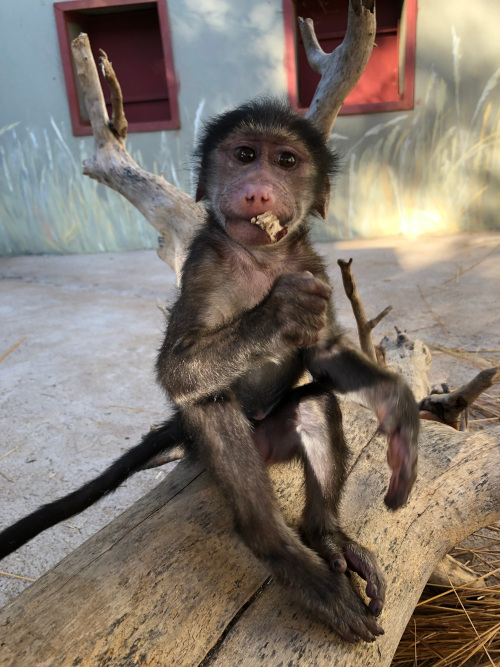
Baby baboon Mandela arrived at C.A.R.E. while we were there. He was rescued at about 10 weeks old after he was found with his mother who was shot and killed. He was quite energetic and playful when he arrived but he did suffer night terrors and seemed to be afraid of adult baboons so he has a way to go for his rehabilitation. Mandela made a fun new friend for Oreo in the nursery. While the baby baboons are adorable, it is important to mention that baboons will never make appropriate pets for humans and the goal is always to return them to the wild.
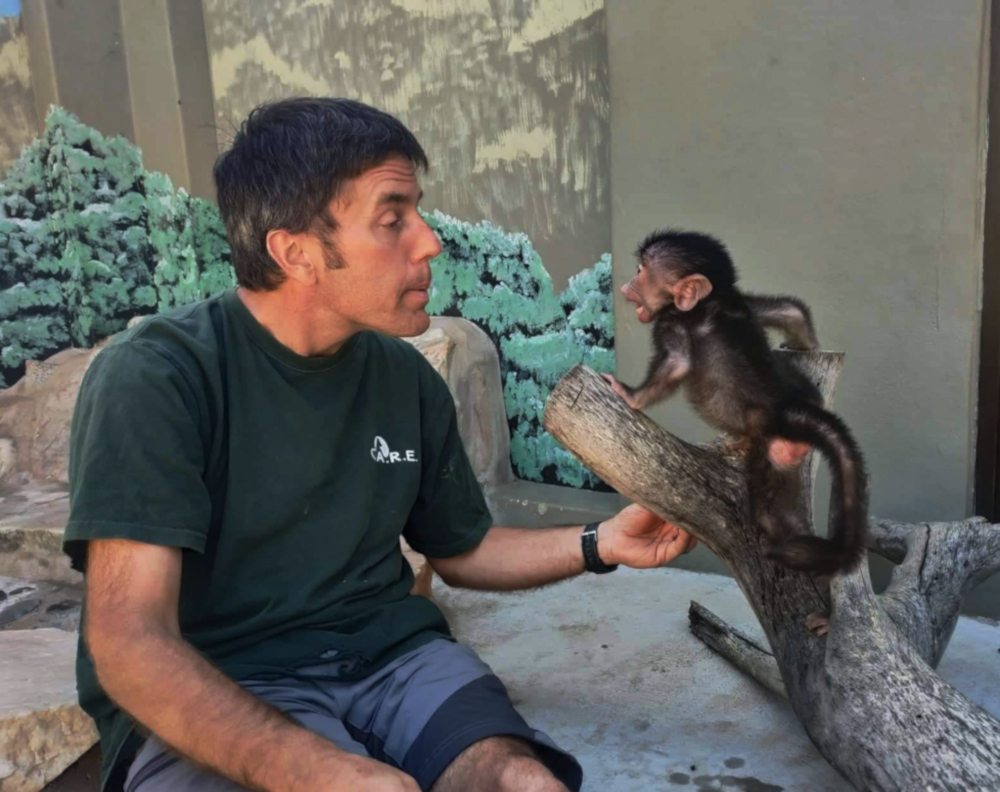
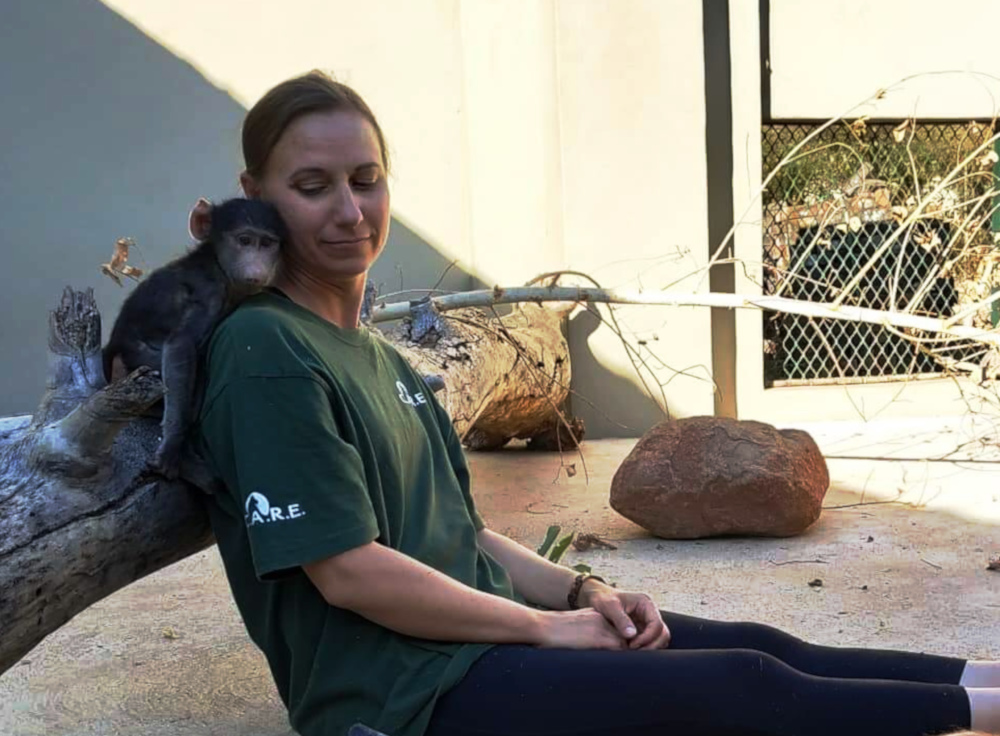
C.A.R.E. has a small workforce of local South Africans but volunteers are responsible for many of the daily operations of the centre. Volunteers also usually make a financial donation to the centre, which helps cover the costs of the centre’s operations. All volunteers are provided room and board and three basic meals a day. All the food prepared at C.A.R.E. is vegan, which worked out quite well for us.
There are a number of long-term volunteers who live at C.A.R.E. for three months up to a year or more. They are a dedicated group who work very hard to take care of the baboons at the centre. They also train the short-term volunteers like ourselves. During our stay there were volunteers from Canada, England, France, Scotland, Ireland, South Africa, and the United States. Our volunteer duties typically included preparing food and bottles for the baboons, cleaning the baboons’ enclosures, sorting and cleaning food donations, cleaning various areas of the centre, and assisting with the care of the bunnies, guinea pigs, and chickens that also live at the centre.
We also were able to spend time in the nursery with the baby baboons, always accompanied by at least one more experienced long-term volunteer. Rob also assisted with bottle feedings of some of the younger baboons that are no longer in the nursery, a job that requires considerable caution and safety measures.
While we were there we also participated in a “walk for freedom” fundraiser, which involved walking 28 kilometers from C.A.R.E. to the gate of Kruger National Park. C.A.R.E. staff and volunteers and a group of local school children participated in the walk. We also picked up garbage along the side of the road during the walk for a community clean up. It was a long day and by the end our feet were sore and we were covered in dirt but it was a fun experience and a nice way to give back to the local community.
Out of our two weeks at C.A.R.E. we “worked” for 13 days and took one day off as a rest day. We wanted to spend as much time at the centre as we could since we were only there for two weeks but they do offer a variety of day trips to volunteers, including game drives at Kruger and various sightseeing tours. On our rest day we visited the lodge next door, where we enjoyed relaxing and watching giraffes and vervet monkeys that stopped by periodically as we lounged by the pool.

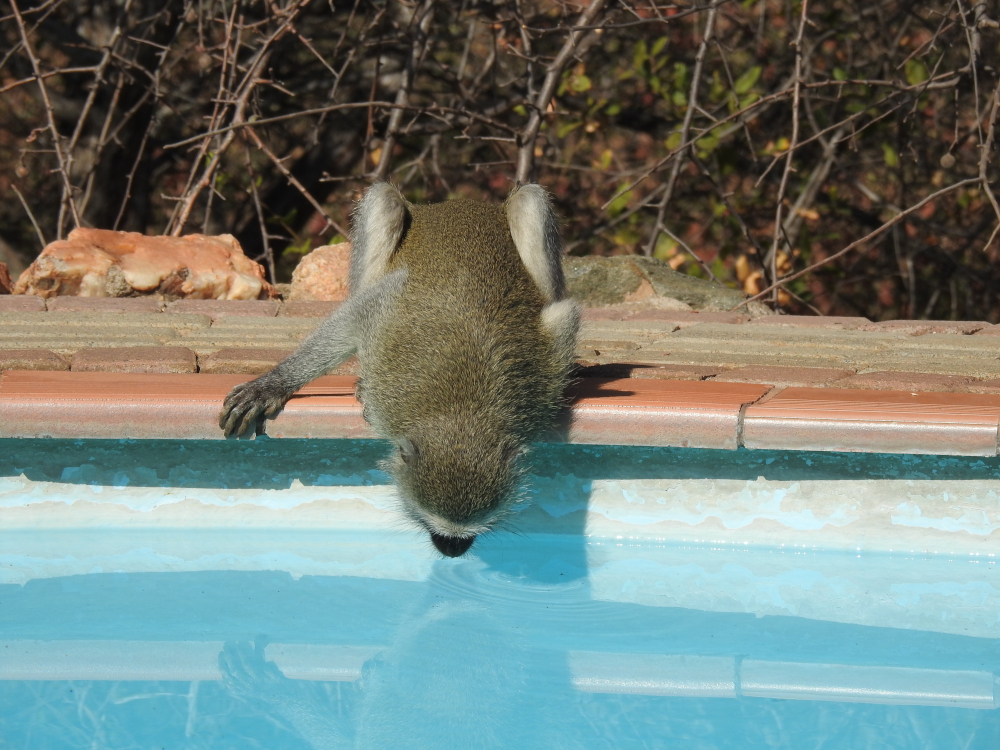

We also went out one evening for dinner and a night river safari at Olifants River Lodge, which was an enjoyable excursion. Honestly, two weeks is somewhat brief for a volunteer assignment abroad as it took us about a week to learn enough to truly become useful. I can understand why many places prefer longer volunteer commitments but we were appreciative of everyone’s patience with showing us the ropes. Since the centre is in a very remote location, we ate most meals together with the other volunteers. We also stayed in a “volunteer village” where Rob and I had our own private room but shared living spaces and bathrooms so it was very much communal living.
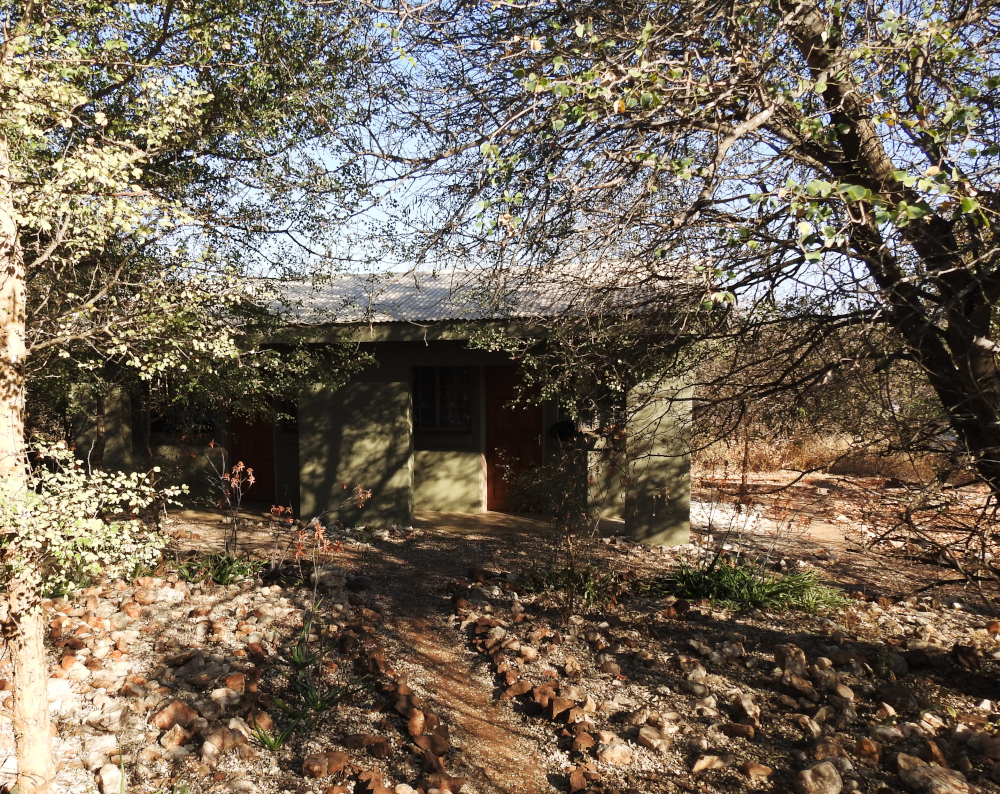
We learned so much about baboons and the challenges they face in Africa during our time at C.A.R.E. We were educated about the ways baboons communicate with each other, including lip smacks, wahoos, and other calls with specific meanings. It seems that baboons might be the least loved of all the primates, despite their intellect and having so many qualities that are similar to humans, which is rather sad. Baboons are not an endangered species but I like C.A.R.E.’s philosophy that we should not wait until a species becomes endangered to care about them and help them. All animal life is important enough to care about.
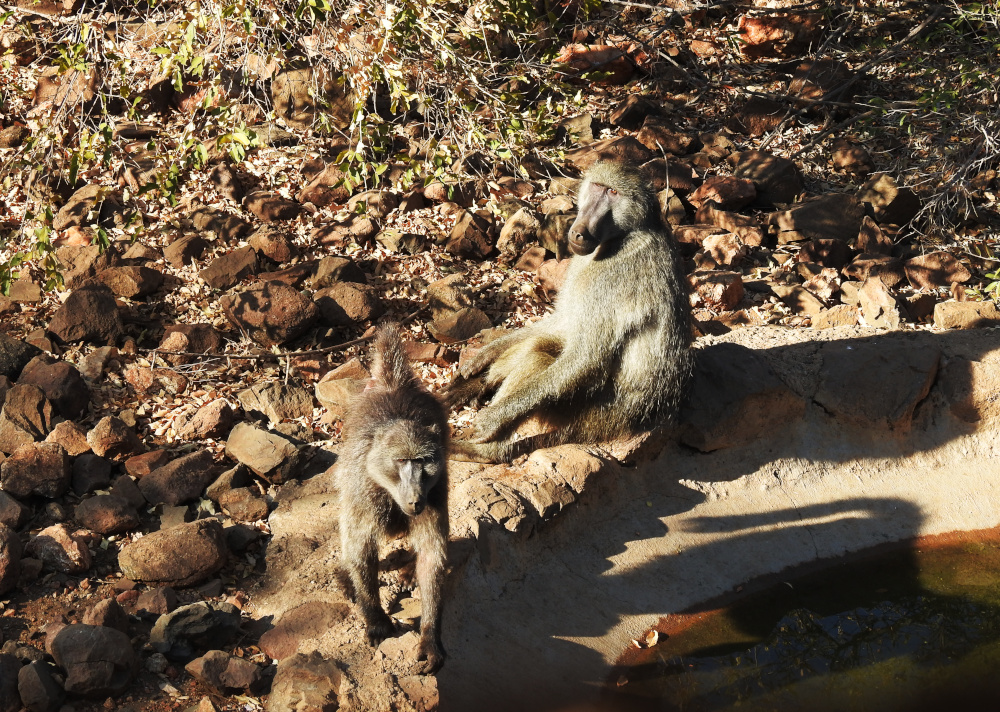
Our days were sometimes long and we definitely did our fair share of dirty jobs, but at the end of the two weeks, we were glad that we had this unique experience at a place where animals’ welfare and best interest are at the core of everything in a part of the world that was entirely new to us. It was great to meet people who love primates and dedicate their time and abilities to making sure that baboons have better lives and second chances at freedom. If you would like to learn more about C.A.R.E. and the work they are doing you can visit them online here: https://www.primatecare.org/

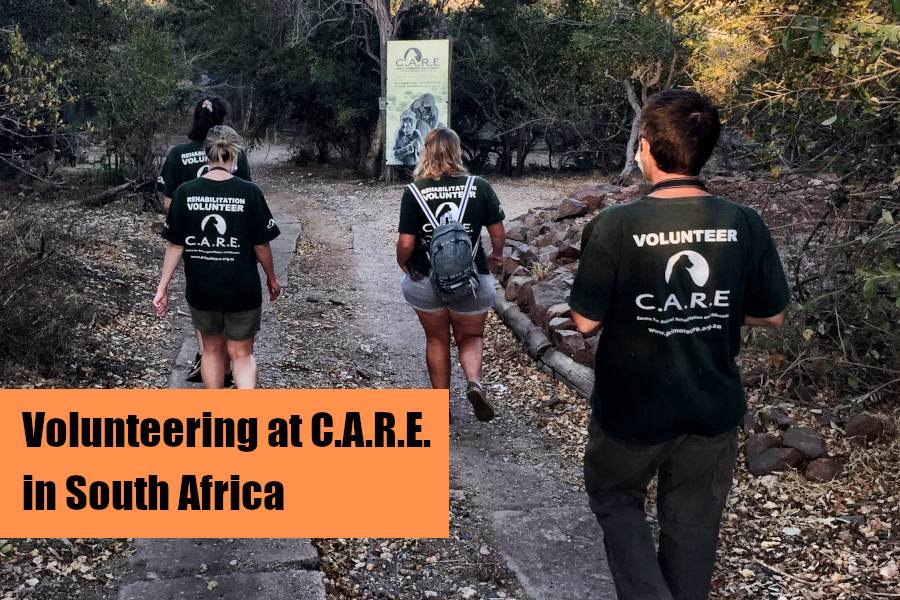

What an incredible experience. Something so few will experience. So happy to follow your journey.
Thanks Emily! Hope you all are enjoying a wonderful summer with your sweet baby girl!